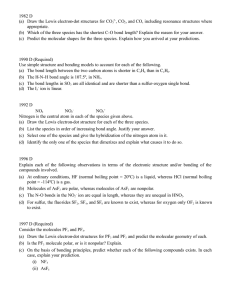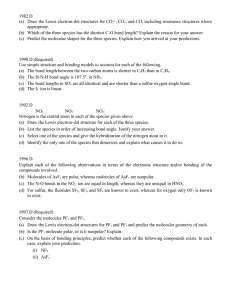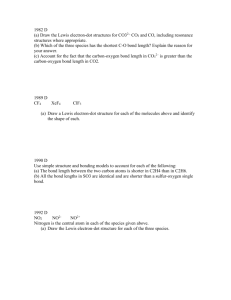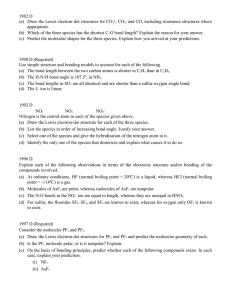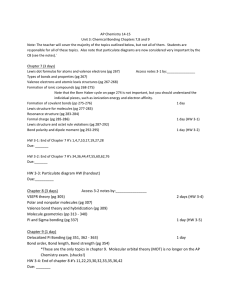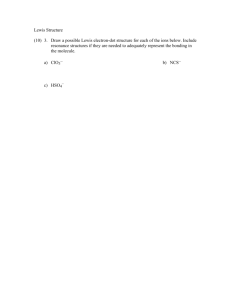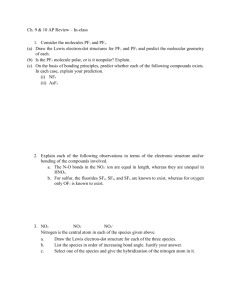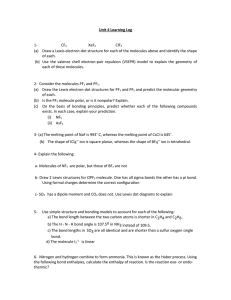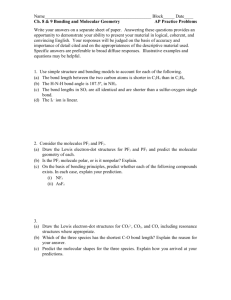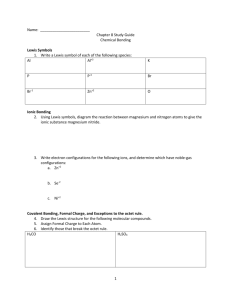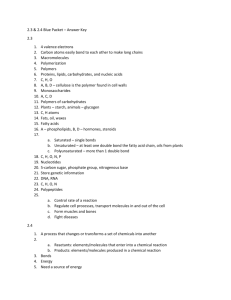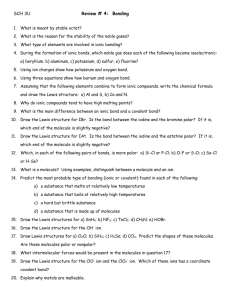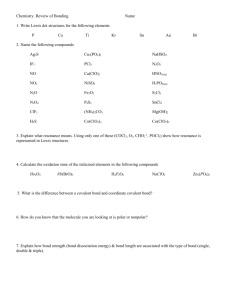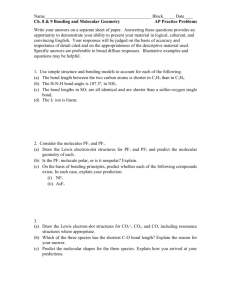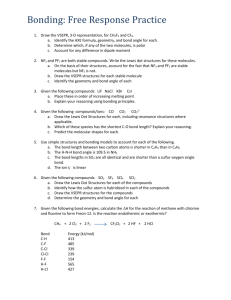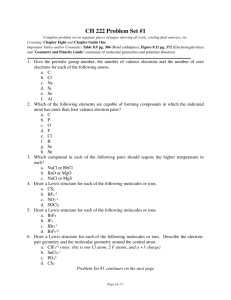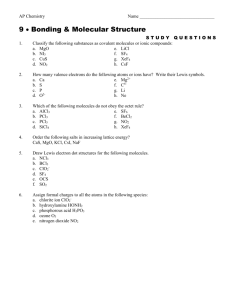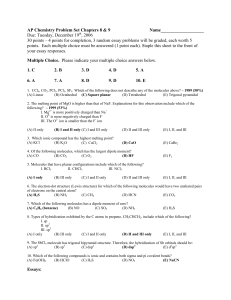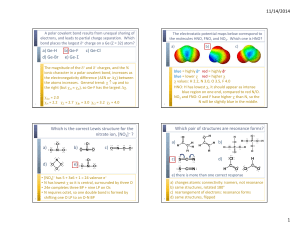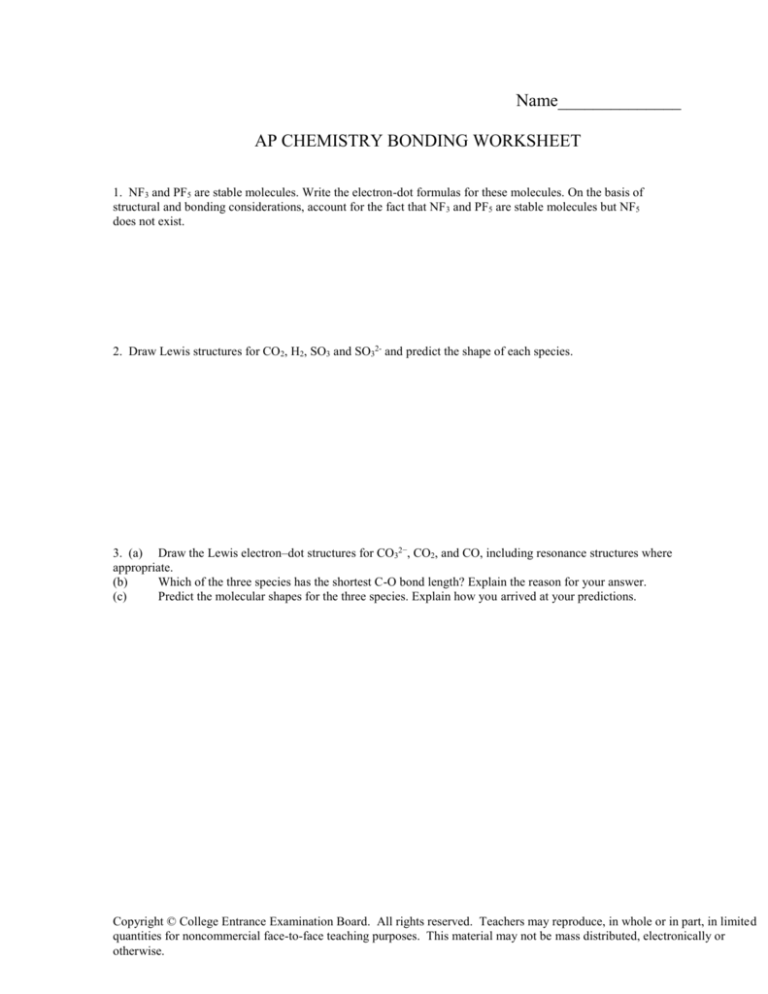
Name______________
AP CHEMISTRY BONDING WORKSHEET
1. NF3 and PF5 are stable molecules. Write the electron-dot formulas for these molecules. On the basis of
structural and bonding considerations, account for the fact that NF3 and PF5 are stable molecules but NF5
does not exist.
2. Draw Lewis structures for CO2, H2, SO3 and SO32- and predict the shape of each species.
3. (a) Draw the Lewis electron–dot structures for CO32−, CO2, and CO, including resonance structures where
appropriate.
(b)
Which of the three species has the shortest C-O bond length? Explain the reason for your answer.
(c)
Predict the molecular shapes for the three species. Explain how you arrived at your predictions.
Copyright © College Entrance Examination Board. All rights reserved. Teachers may reproduce, in whole or in part, in limited
quantities for noncommercial face-to-face teaching purposes. This material may not be mass distributed, electronically or
otherwise.
4.
CF4
XeF4
ClF3
(a)
Draw a Lewis electron–dot structure for each of the molecules above and identify the shape of each.
(b)
Use the valence shell electron–pair repulsion (VSEPR) model to explain the geometry of each of these
molecules.
5. Use simple structure and bonding models to account for each of the following.
(a)
The bond length between the two carbon atoms is shorter in C2H4 than in C2H6.
(b)
The H-N-H bond angle is 107.5O‚ in NH3.
(c)
The bond lengths in SO3 are all identical and are shorter than a sulfur-oxygen single bond.
(d)
The I3− ion is linear
6.
NO2
NO2−
NO2+
Nitrogen is the central atom in each of the species given above.
(a)
Draw the Lewis electron-dot structure for each of the three species.
(b)
List the species in order of increasing bond angle. Justify your answer.
(c)
Select one of the species and give the hybridization of the nitrogen atom in it.
(d)
Identify the only one of the species that dimerizes and explain what causes it to do so.
Copyright © College Entrance Examination Board. All rights reserved. Teachers may reproduce, in whole or in part, in limited
quantities for noncommercial face-to-face teaching purposes. This material may not be mass distributed, electronically or
otherwise.

